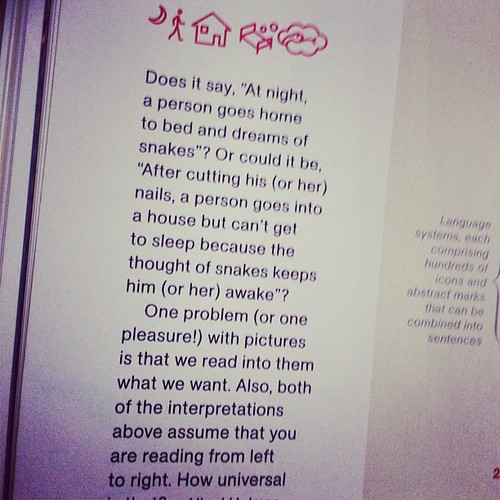I saw this in the August 2013 National Geographic.
It reminded me of when I taught 6th grade English. I used rebuses quite a bit. It was a fun way to help reluctant readers and writers. The National Geographic article sparked a few new ideas though.
First, using The Noun Project as a source gives you and your students a huge repository of icons to use for games like this.1
The portion of the article that got me interested was the idea of intentionally misinterpreting the rebuses or reading them from right to left so they tell a completely different story. It feels like there are some opportunities there.
Take a series of icons and –
- summarize a book, article, or poem
- make a rebus palindrom
- make a rebus when read right to left means the opposite of the left to right reading (I can’t find the opposite of a palindrom)
- create a famous quote (bonus points for how fast your classmates figure it out)
- use them for simple writing prompts (add variables for student interpretation (e.g. look at this literally, read it left to write, interpret is like a surrealist). That way you and your students are not bored and they have a reason to read other students’ interpretations. At this moment in time, I’d build a random viewpoint website and add lots of options to it.
- use them as a gateway to synonyms

This was just a random four icons taken from the browse section.2
In the anti-understanding vein-
I was slapped in the face and for what? It was the best drawing of a tornado I could manage as I was in a hurry. I had to be halfway up a mountain range by dawn.
From right to left-
Life is a downward plunge. The clock started long ago. It’s a downward spiral. No one hears your screams.3
1 Although I am not a fan of downloading zipped svg files. I understand but I don’t like it.
2 All images from Rémy Médard from the Noun Project.
3 Wow. That was a bit dark.

